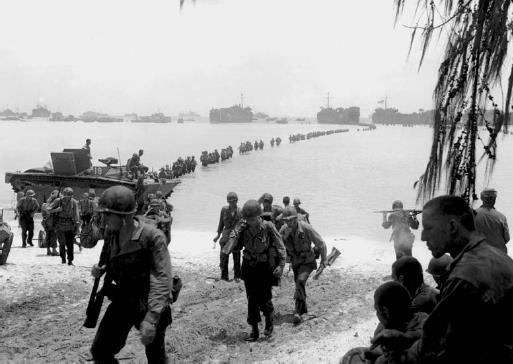Two weeks after the Japanese bombing of the U.S. military bases at Pearl Harbor and the Philippines, Japan invaded the Philippine Islands. General Douglas MacArthur (1880–1964), the commander of the U.S. Army forces in the Far East, led the defense of the archipelago. He had begun to organize his troops around Manila Bay when, in March 1942, he received orders from the president to leave the islands. When he reached Australia, MacArthur said, “I shall return,” in reference to the Philippines. Under new commands, MacArthur directed the Allied forces’ offensive against Japan throughout the Southwest Pacific Islands. After a string of successes, on October 20, 1944, MacArthur made good on his promise, landing on the Philippine island of Leyte, accompanied by a great invasion force. By July of the following year, the general had established practical control of the Philippines. When Japan surrendered in August, MacArthur was made the supreme commander of the Allies, and as such, he presided over the Japanese surrender aboard the USS Missouri on September 2. He received the Medal of Honor for his defense of the Philippines, but he wasn’t the only hero in the MacArthur family: His father, Arthur MacArthur (1845–1912), had received the nation’s highest military award during the Civil War (1861–65).

U.S. Army troops make their way across the coral reef in the South Pacific Mariana Islands in July 1944.

